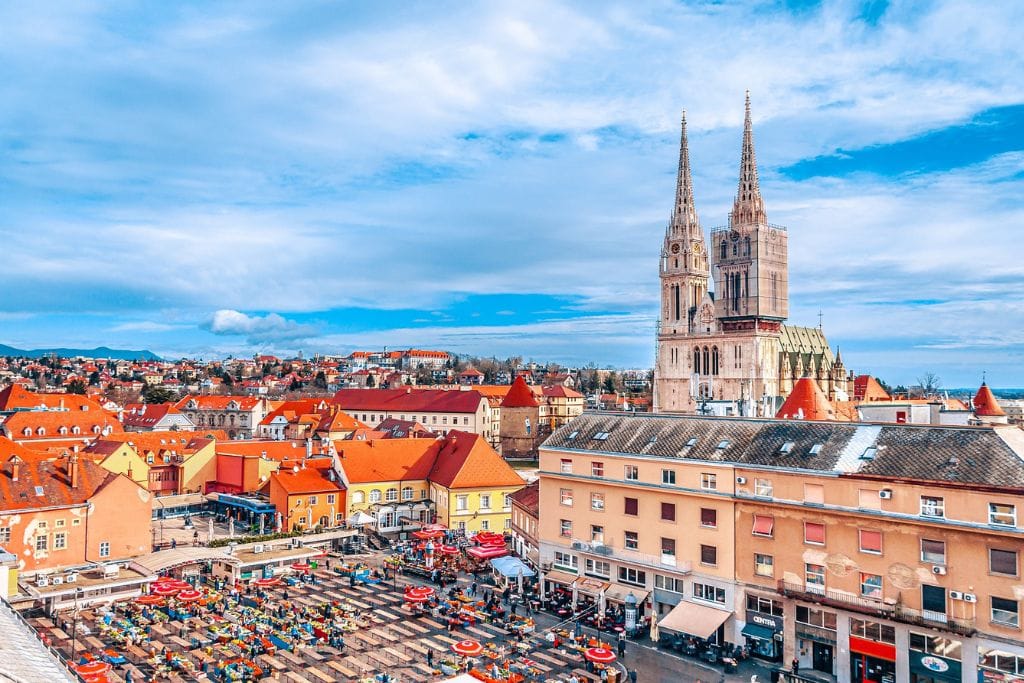25 Interesting Facts About Zagreb Croatia That Will Surprise You (2024)
Zagreb is the capital of Croatia and sits at the center of the country’s incredibly rich yet gruesome history. If you’re planning a trip to Zagreb soon or simply looking for some fascinating facts about the city, you’ve come to the right place! Here are 25 Interesting facts about Zagreb Croatia that will surprise you and perhaps entice you to finally book that trip!
25 Interesting Facts About Zagreb Croatia
#1 How Old Is Zagreb?
Located in the north-central region of the country, Zagreb is one of the oldest cities in Europe. The city’s name was first written in a charter from 1134 as Zagrabiensem episcopatum, but the city has a history dating back well over a thousand years.
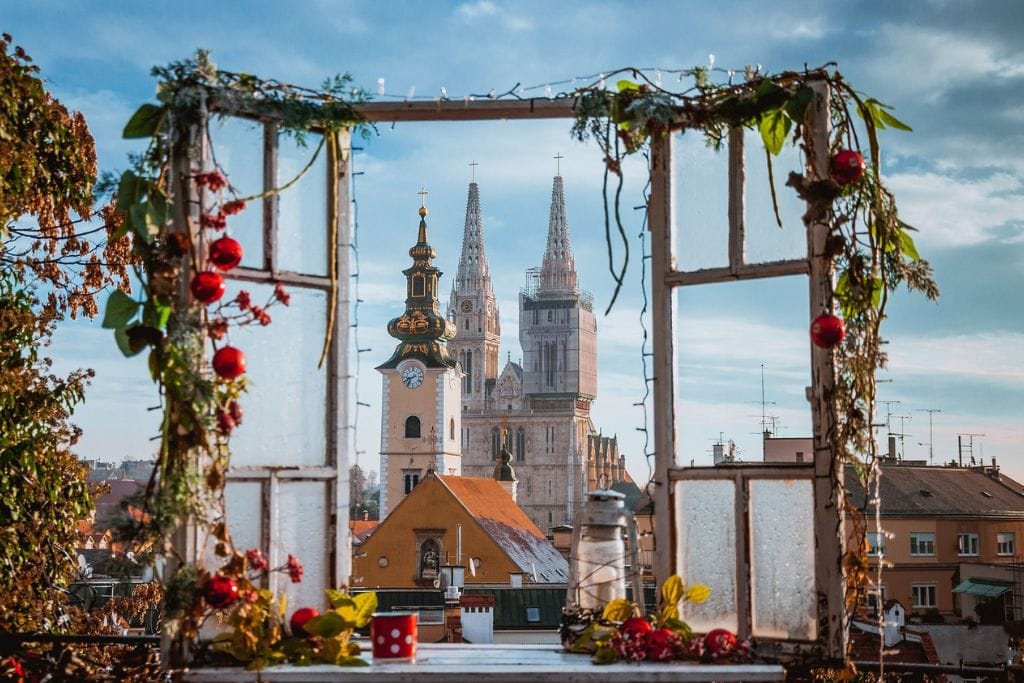
#2 How Did Zagreb Get Its Name?
Although the exact origin of the city’s name is unknown, there are several working theories. One ancient folklore claims that present-day Zagreb was once a city plagued by a horrible drought.
When an exhausted military commander was passing through with his dehydrated army, the commander plunged his sword into the arid ground. Moments later, water came miraculously pouring out of the cracked ground, much to the relief of the troops. Legend has it that a beautiful girl by the name of Magdalena (or Manda for short) was walking nearby when the military commander stopped and asked her for water by saying, “Mando, dušo, zagrabi vode.”
A unique combination of the commander’s words, “Manda” and “dušo” led to the name Manduševac for the spring that emerged at the famed encounter. Similarly, the town that eventually developed around the spring was also named, “Zagrabi,” after the commander’s request. For centuries, the spring would supply the city with plenty of water, and the town became what is known to be present-day Zagreb.
#3 The Most Populous City in Croatia
Today, Zagreb is the largest city in Croatia and serves as an economic and cultural hub for the city. A 2021 census report approximates that 800,000 people are living in the city. This is equivalent to a quarter of the country’s population. To give you a reference point, this is also more than 4x as many people as the next most populous city in Croatia, Split, which has about 162,000 inhabitants.
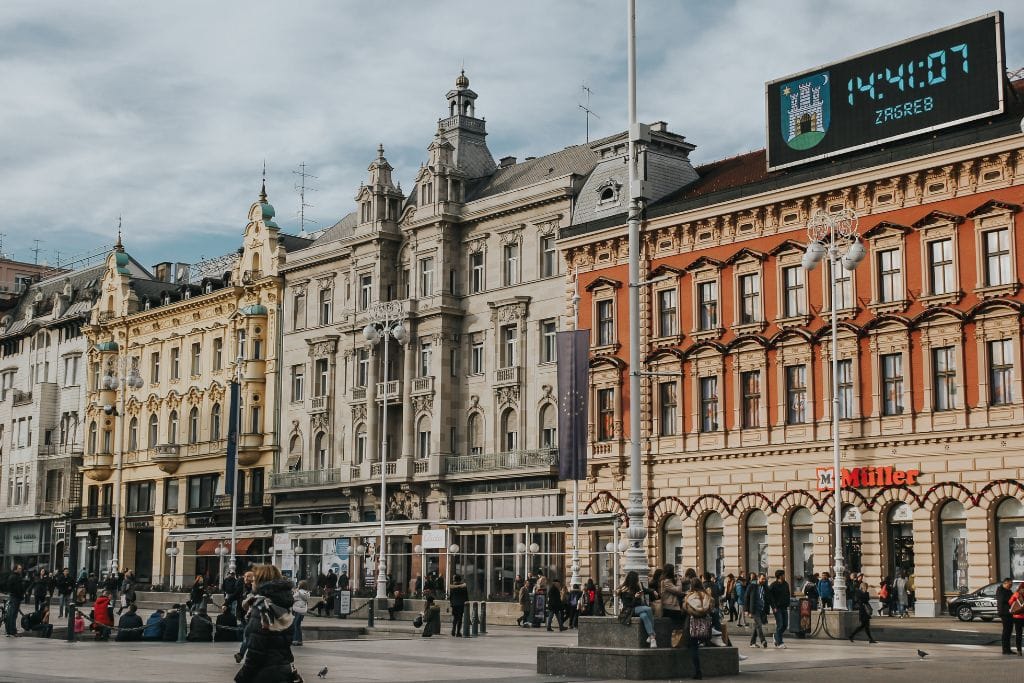
#4 A City Split Into Two
Zagreb is split into two main sections: Upper Town and Lower Town. Aside from being geographically on top of a hill, Upper Town is a more historic area of the city. Some of Upper Town’s famous landmarks include St. Mark’s Church, St. Catherine’s Church, Parliament Building, Lotrščak Tower, and Zagreb Cathedral. In contrast, Lower Town is more modern, filled with hotels for visiting tourists, huge shopping malls, an abundance of parks, and most of the city’s museums.
Facts About Upper Town in Zagreb Croatia
#5 Home to the World’s Shortest Funicular
Originally built in 1893, the Zagreb Funicular is one of the shortest forms of public transportation and the shortest funicular in the world. It transports passengers a massive distance of 66 meters (217 feet), which equates to about a 90-second ride from Lower Town to Upper Town.
It’s one of the most popular tourist attractions in Zagreb and only costs 5 kunas to ride. When you reach the top, you’ll see a stunning view of the city and its lovely red rooftops. Definitely worth the money and offers a unique and fun experience if I do say so myself!
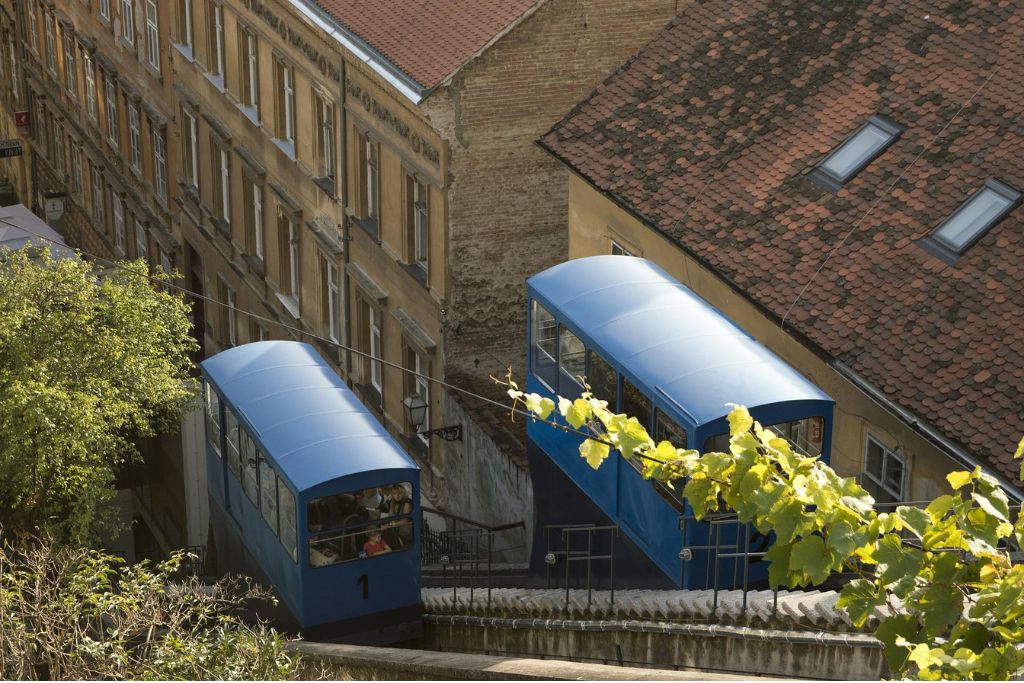
#6 Hear the Grič Cannon Blast
If you time your ride up the funicular correctly, you might be able to see and hear the Grič cannon. Every day at noon, a blank cannon is fired from a window in Lotrščak Tower, which stands directly behind the Zagreb funicular.
For the most part, the cannon has signaled midday to the people for over 140 years. However, this longtime tradition was halted after an earthquake shook the city and its people to their core. Following the earthquake, citizens found the loud boom and its following vibrations to be a traumatic reminder of the terror and destruction of the earthquake. Luckily, in February 2022, the tradition was brought back and the cannon’s daily firing can be enjoyed by tourists and locals alike.
#7 One Architect vs 30 Churches
In 1880, a 6.3 earthquake struck Zagreb, damaging buildings all around the city. Although only one person was killed, the tremendous and fateful moment is referred to as the Great Zagreb Earthquake.
For many decades, Herman Bollé spent all his time reconstructing 30 churches around the city, many of which can be seen in Uppertown. While this feat alone is remarkable, the architect ended up creating and restoring 150 buildings around Zagreb. Locals and tourists have him to thank for the Zagreb Cathedral’s imposing Neo-Gothic style spires.

#8 A Tainted Past
Inside the Zagreb Cathedral are three giant and gorgeous chandeliers. Looking at them, you may be surprised to discover that they were originally from the Gold Coast casino in Las Vegas. They made their way to the Zagreb Cathedral at the suggestion of Croatian immigrant Stefan Stanki. He previously worked at the casino and asked the casino owner if he would consider donating the chandeliers since they were going to be auctioned off.
Considering where the chandeliers are today, they are understandably met with mixed reactions when patrons learn of the chandeliers’ origins.
#9 Meaning Behind the Mesmerizing Roof
One of the most recognizable and iconic symbols of Zagreb is the colorful glazed tile roofing on St. Mark’s Church in Upper Town. Although the church itself dates back to the 13th century, we once again have the incredible architect Herman Bollé to thank for this masterpiece that was erected after the 1880 earthquake.
On the striking roof, you’ll notice various symbols depicted. To be more specific, the right side of the roof features the emblem of Zagreb with its three-towered city. Meanwhile, the left side features a combination of 3 medieval coats of arms.
The first one is Croatia’s signature red and white coat of arms on the upper left side. Then directly to the right is Dalmatia’s blue coat of arms with images of crowned lions. Lastly, the bottom half has Slavonia’s medieval coat of arms with a pine marten or kuna in the middle.

#10 The One That Survived It All
Before the 19th century, most of the buildings in Zagreb were primarily made out of wood. As a result, the city was no stranger to fires occurring. However, there was one area in Upper Town known as Stone Gate that was made out of… you guessed it, stone.
Despite the change in building materials, even Stone Gate experienced four devastating fires in a period of fewer than 100 years. During the last fire in 1731, Stone Gate and nearly everything within it were demolished. However, there was one painting of the Virgin Mary and baby Jesus that survived almost perfectly unscathed.
Today, the painting can be viewed at Stone Gate behind an ornate, baroque-style fence. Locals often come to the site to seek comfort and pray for miracles. There are also hundreds of engraved plaques around the site serving as a testimony for the citizens who have had their prayers answered.
#11 How to Trap a Witch
One more of the more gruesome yet interesting facts about Zagreb Croatia is the city is notorious for its persecution of witches during the 18th century. Back in the day, people were absolutely terrified of witches and their potential witchcraft. As a result, the city participated in mass witch hunts and witch trials. 326 women were accused of witchcraft and ultimately, 106 were burned at the stake.
It wasn’t until 1756 that Empress Maria Theresa passed an act declaring that all evidence of witchcraft be brought before her to make a final decision that the hysteria surrounding witchcraft ceased.
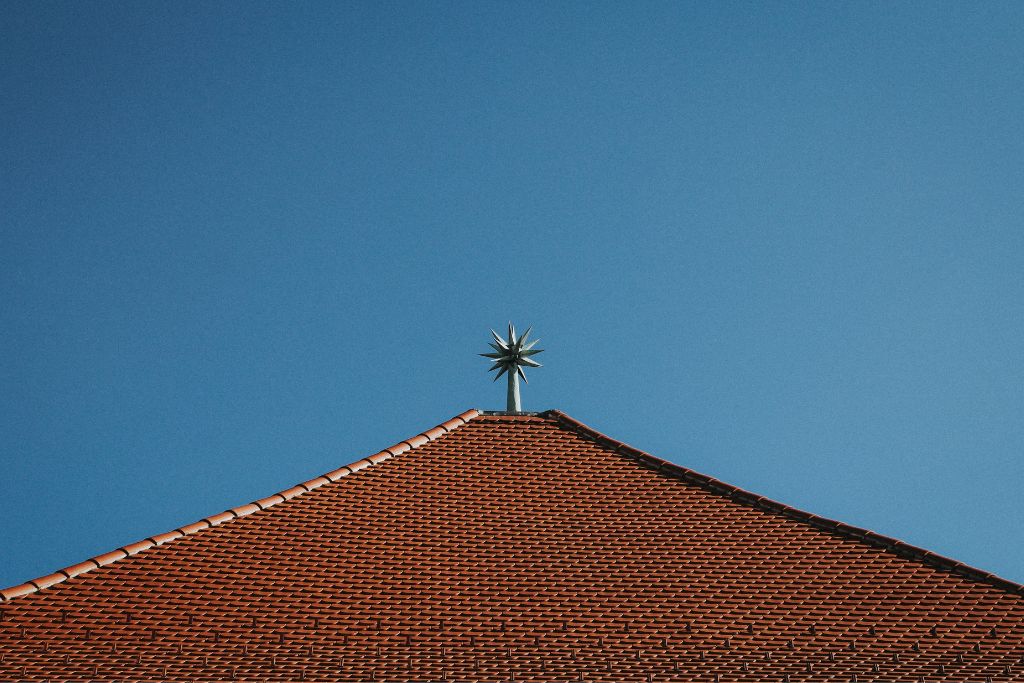
If you walk around Upper Town, you’ll notice that some of the roofs near Stone Gate still bear relics in the form of spikey mace balls from this period. This is because the spikes were believed to catch the dresses of women who would fly on brooms in the middle of the night.
#12 Meet at Bloody Bridge
Krvavi Most is a street in the middle of Zagreb, but it wasn’t always a regular ole street. Back in the day, it was a bridge that crossed over Medveščak Creek and connected two cities: Kaptol and Gradec
These two cities were far from amicable and had a bitter rivalry against one another. As a result, residents of the two cities often got into bloody fights with one another at the bridge. For this reason, the present-day street is forever called Bloody Bridge or Krvavi Most as a reminder to every one of the histories that existed before Zagreb.
Facts About Lower Town in Zagreb Croatia
#13 Lenuci’s Green Horseshoe
Within Zagreb’s Lower Town, seven parks along with the Zagreb Botanical Gardens form Lenuci’s Green Horseshoe. Essentially, if you got an aerial view of the city, you would see that the eight green spaces line up in a U-shape configuration that resembles the shape of a horseshoe.
Many of Lower Town’s historic landmarks are located along the Green Horseshoe, such as the Croatian National Theatre, which operates as a theatre, opera, and ballet house. Thus, if you are looking for an easy way to explore Lower Town and admire the magnificent architecture of the city, I highly recommend walking through the network of parks.
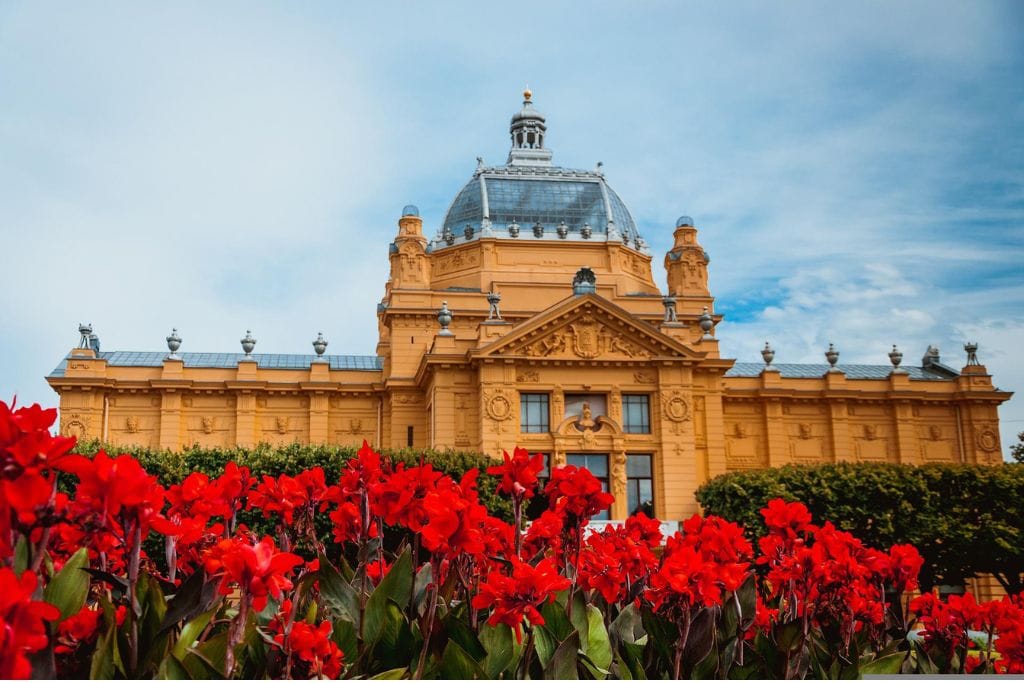
#14 Wealth Check at Esplanade Zagreb Hotel
Arguably the most famous and historic hotel in Zagreb is the Esplanade Zagreb Hotel, which is located in the heart of the city. It was originally built in 1925 with the intention of providing housing accommodations for passengers from the famed Orient Express train that traveled all over Europe.
Since its grand opening, the luxury hotel has hosted all kinds of famous people including, Josephine Baker, Woody Allen, HRH Queen Elizabeth II, Louis Armstrong, Ella Fitzgerald, Catherine Deneuve, and so many more.
Today, the hotel is a symbol of the city and is viewed as the most prestigious hotel in Zagreb. If you get the chance to visit the city, I highly recommend staying in this undoubtedly historic hotel. It really is spectacular and will make your visit to Zagreb all the better with the hotel’s high-end amenities and incredibly hospitable treatment!
✔️ Check rates and availability for a luxurious stay at the famous Esplanade Zagreb Hotel
Or, check out the other housing options that are available with the interactive map below. You’ll be able to compare current prices across all kinds of booking platforms! 🤠
What Is Zagreb Croatia Known For?
#15 Sweet and Savory Štrukli
Aside from everything else that I’ve mentioned, Zagreb is also known for its delicious traditional Croatian food. One dish that I found to be especially tasty is štrukli. The dish consists of a special dough that’s filled with fresh cottage cheese, and sour cream and served with an assortment of toppings.
If this sounds appetizing to you, or even if it doesn’t, I highly recommend giving it a try when you’re in the city next. The place I went to and loved is called La Štruk! It serves various iterations of the dish with different toppings!

#16 The Best Christmas Market
Have you ever won something so many consecutive times that you’re no longer allowed to compete? Yeah, me neither…but Zagreb has! Every year, Croatia hosts a city-wide winter wonderland experience for locals and tourists to partake in called Advent for Christmas. The massive event includes 25 individual Christmas markets spread across the city, each with its own theme, decorations, games, and unique atmosphere.
As a testimony to the scale, grandeur, and overall success of Advent for Christmas, Zagreb’s event has won several awards. Most notably, it was named “Best Christmas Market” by European Best Destinations for three consecutive years (2016-2018).
If you’re wondering why they haven’t won since 2018, it’s because they are illegible. The global competition allows a particular city to only win a maximum number of three times. Crazy, I know, but we all know which is best. 😌
What Is Unique About Zagreb?
#17 Lighting the Way One by One
A unique fact about Zagreb, Croatia that I love is that they still use old gas lanterns to light the city. This means that every night before dark, a couple of lamplighters go around the city manually lighting the 217 gas lanterns with a, for lack of better words, “white pokey stick.” Then each morning before sunrise, the gas lamps are individually extinguished one by one.
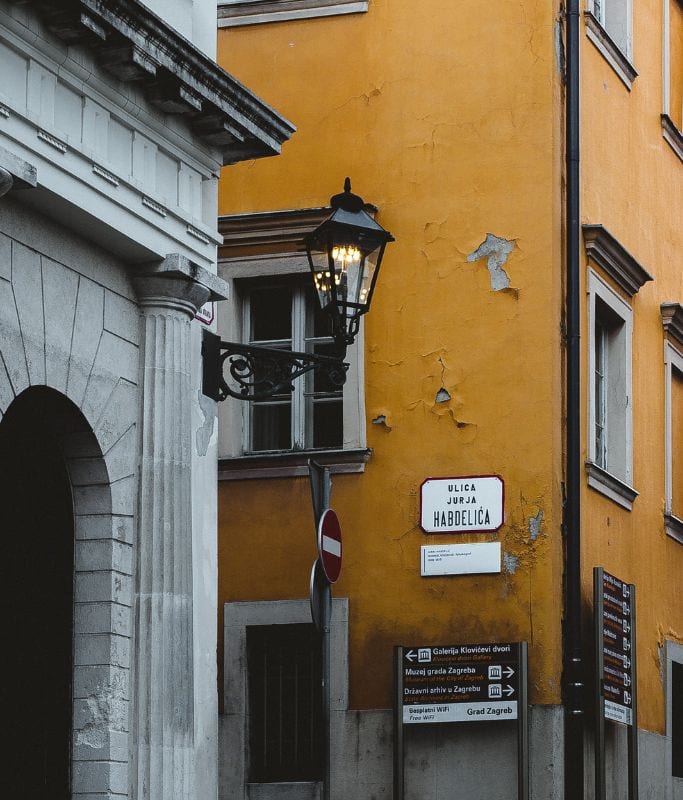
The entire process takes about 2-3 hours, and not a single day has been missed since 1863. Whether there’s snow, rain, or blistering winds, the lamplighters are there, dedicated as ever to their job. If you spot them in their signature gray suits, be sure to say hello! You can even ask to light one of the lamps and perhaps catch a glimpse of the days without electricity. What a time it must’ve been…
#18 The City of Museums
With about 30 museums and galleries to visit, Zagreb is often referred to as the city of museums. Never in my life have I seen so many museums concentrated over such a small space.
There’s truly a museum for everyone in Zagreb. For example, the Museum of Illusions boasts over 70 exhibits with all kinds of trippy optical illusions, holograms, and interactive games. Meanwhile, the Museum of Hangovers shares many funny stories from drunken nights out, and allows you to experience the feeling of drunkenness without a single drop of alcohol!
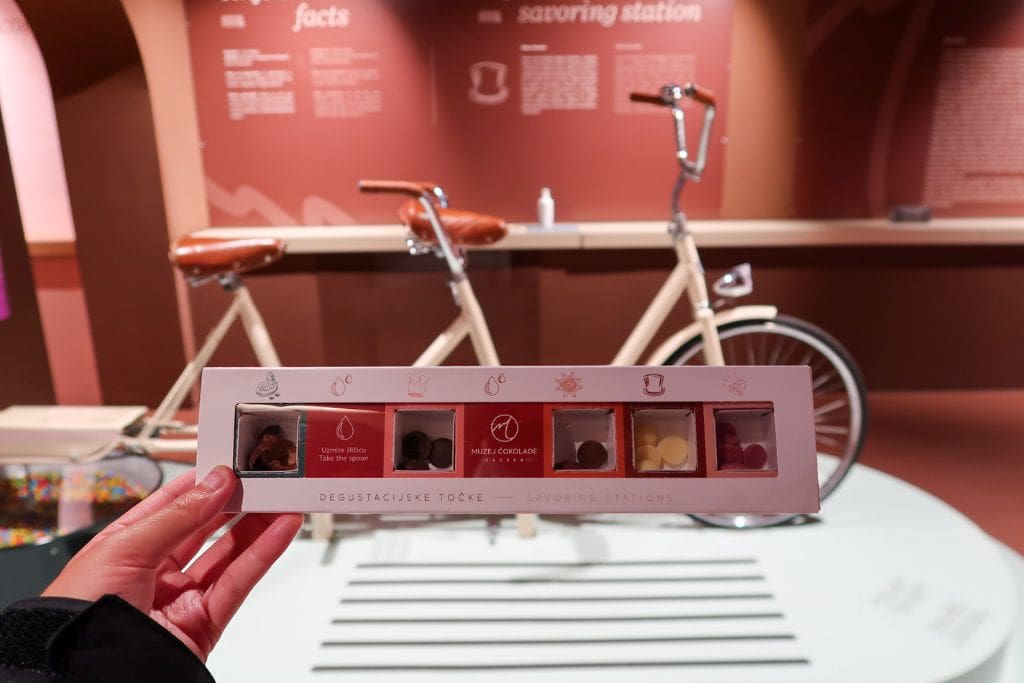
One museum I thoroughly enjoyed walking through and highly recommend for any sweets lovers is the Museum of Chocolate. There are about 8 rooms that illustrate the history and evolution of present-day chocolate. Along the way, you’ll indulge at several chocolate stations and can consume as much as you want! 🤠
#19 Homage to All the Broken Relationships
While Zagreb is certainly home to lots of quirky museums, one of my favorite facts about Zagreb Croatia is that it has a Museum of Broken Relationships! And it garners quite a bit of attention… 👀 This museum honors all the failed and broken relationships of people around the globe. Inside, you’ll find about 75 – 100 treasured mementos donated by people all around the globe. Accompanying each item is a little plaque that details the backstory of each item.
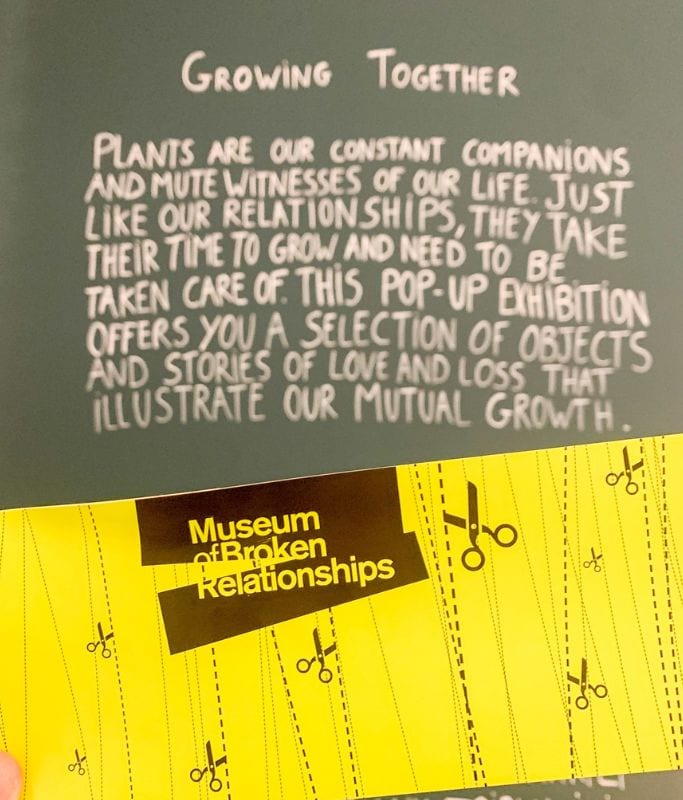
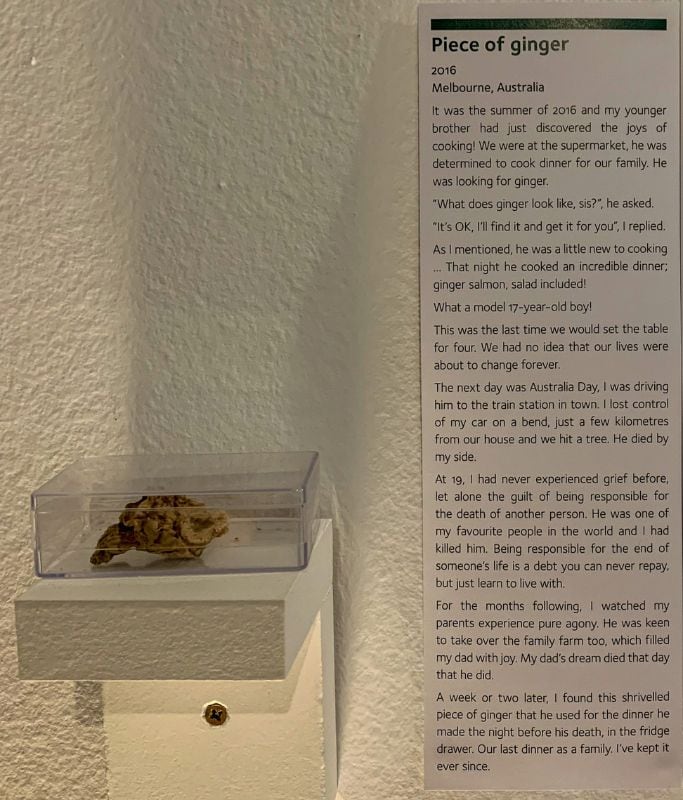
Some of the stories make you laugh over their silly nature, whereas others make you tear up out of sympathy for the loss of a loved one. Regardless, the Museum of Broken Relationships is a definite must and feels like a breath of fresh air.
✔️ Reserve your spot for the Museum of Broken Relationships
#20 Tunnel City
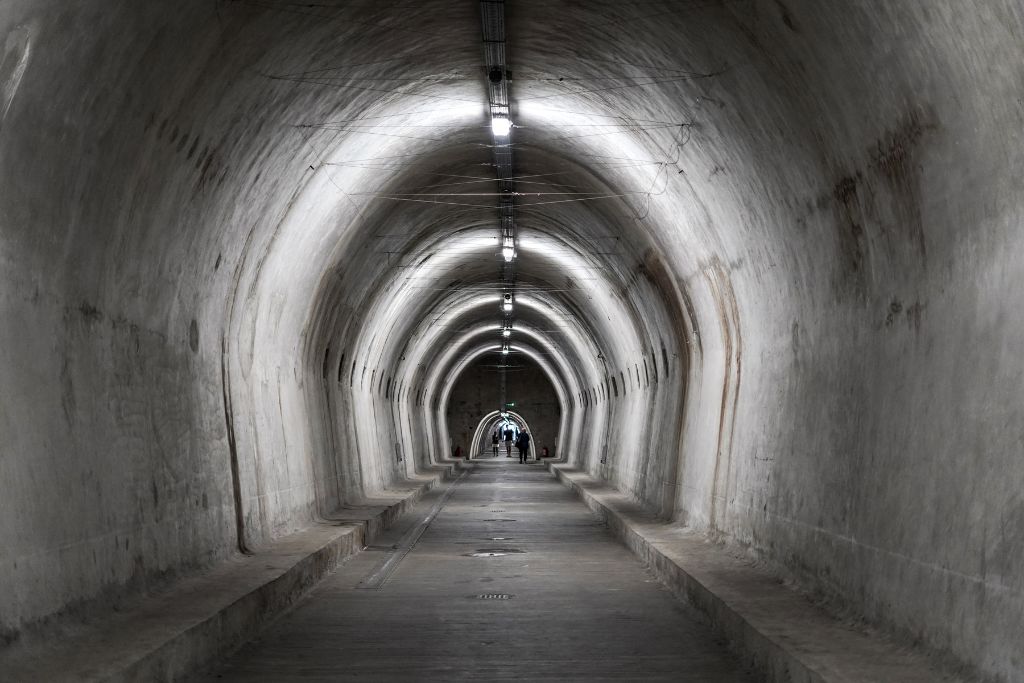
Another unique feature of Zagreb is its network of pedestrian tunnels located under the historic Grič neighborhood. Due to its location, the main tunnel is known as the Grič tunnel and spans 1,150 ft (350 meters). It features a center hall and is connected to two other tunnels. This network of tunnels was originally built as a bomb shelter during World War II but has since been repurposed. In recent years, the tunnel has served as a venue for raves, cultural events, and tourist attractions.
What Are 5 Interesting Facts About Croatia?
#21 Fleeing to the Coast
During the summer months, most of Croatia’s citizens flee to the country’s coastal cities. Some of the more popular cities include Split, Dubrovnik, Zadar, and Pula. This is because these coastal cities experience ideal summertime weather and come with stunning blue waters. However, when the summertime ends, so does the fun. Most of the beach towns empty out as tourism winds down and people return inland to resume normal work life.
#22 A Dying Animal Currency
The currency used in Croatia is Kunas. If the name Kunas sounds familiar, you’ll recall the medieval coat of arms for Slavonia on St. Mark’s Church. Croatia’s currency is named after the Kuna which can be seen on the medieval coat of arms for Slavonia. That said, this currency is no longer in circulation. In January 2023, the country switched over to the Euro. This is an effort to increase the country’s financial security and better the lives of locals.
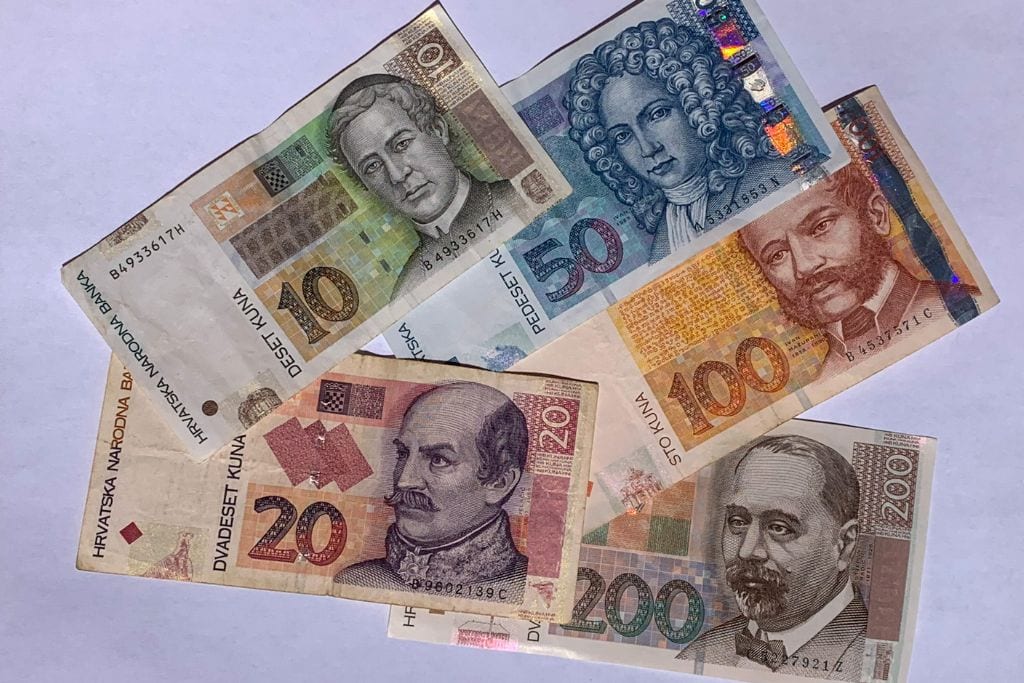
#23 Croatia Nikola Tesla
Famous engineer and physicist Nikola Tesla, who is responsible for inventing the first alternating current and helping modernize our electrical supply systems was born in a small village that’s part of present-day Croatia. As a result, Croatia often pays homage to the work completed by Nikola Tesla. A prime example is Zagreb’s Nikola Tesla Technical Museum, which showcases Tesla’s extraordinary life. The museum includes various interactive exhibits to better understand his work and how his contributions have impacted the world.
✔️ Purchase your admission ticket to the Nikola Tesla Museum
#24 Game of Thrones Anyone?
Dubrovnik, one of Croatia’s coastal cities was the location used for filming most of the King’s Landing scenes in the hit show Game of Thrones. One of the famous scenes shot here is Cersei’s Walk of Shame, which began at the top of the Jesuit Staircase. Meanwhile, Dubrovnik’s Fort Lovrijenac was shot as the Red Keep of King’s Landing.

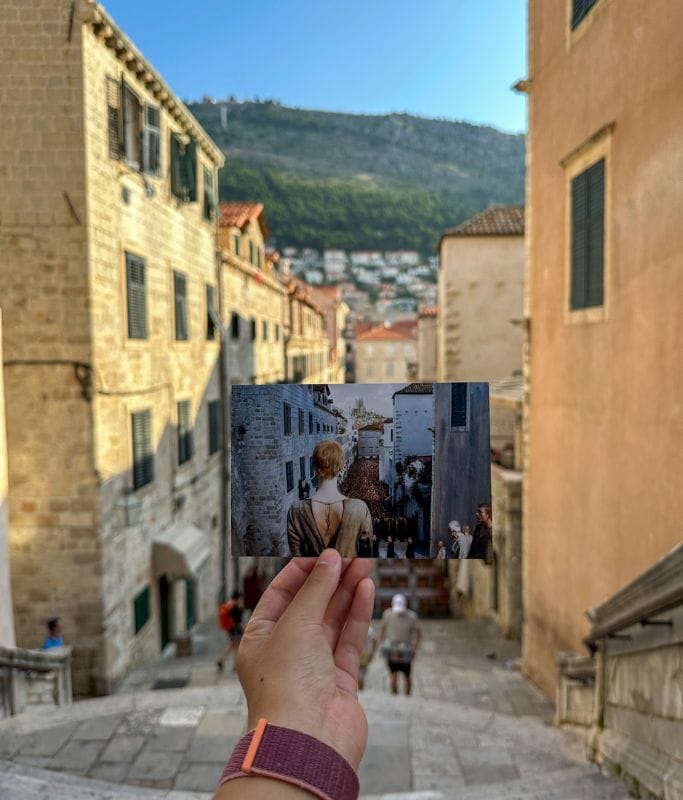
If you’re interested in seeing all these filming locations and more in person, I highly recommend taking this awesome Game of Thrones tour that will transport you back to some of Game of Thrones’ most iconic moments! I was fangirling so hard on my tour. My guide even told me the 4 alternate endings the producers made for the series finale 🫢.
✔️ Check rates & availability for this Ultimate Game of Thrones Tour!
Without a doubt, this is a bucket list stop for any die-hard Game of Thrones fans! Oh, and Dubrovnik is a fun place to go kayaking to secret beaches… yah know, in case you need more recs. 🤠
#25 Green Spaces Galore
Although Croatia is often associated with lots of historic buildings and red tile roofs, there also are several green spaces. To be exact, there are 8 National Parks and 2 nature reserve parks spread across Croatia. Together, these green spaces make up almost 10% of Croatia’s total land.
Conclusion: 25 Interesting Facts About Zagreb Croatia
From its centuries-old traditions to an eccentric collection of museums to visit, Zagreb is such a fascinating city. I urge you to consider making a stop in Croatia to experience and see the incredible local culture for yourself next time you’re in Eastern Europe. It’s truly an underrated city filled with all kinds of hidden gems and stories waiting to be uncovered.
Regardless, I hope you enjoyed these 25 facts about Croatia’s vibrant capital of Zagreb and learned something new to pass along!

